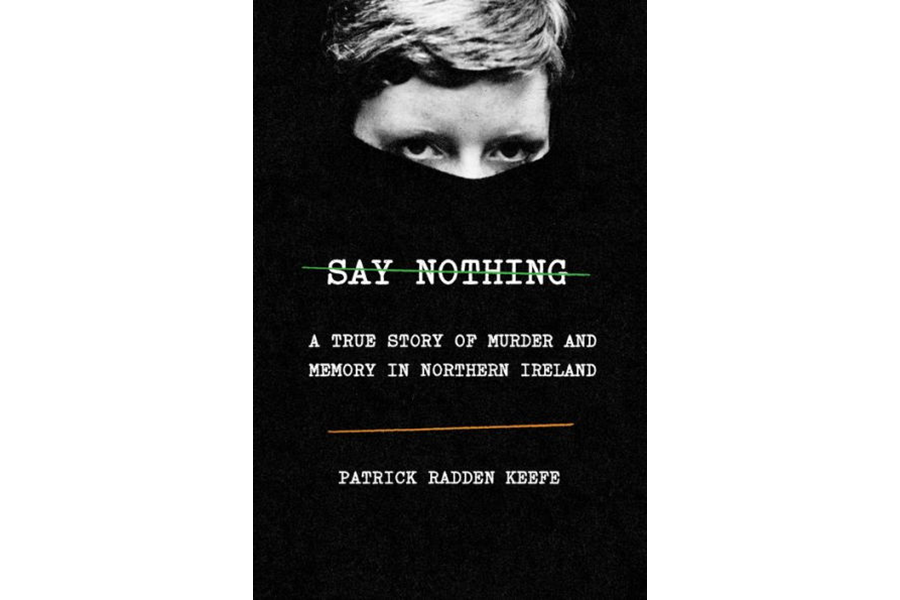'Say Nothing' casts light on the bloody warfare in Northern Ireland
Loading...
In 1975, the future Nobel Prize winner Seamus Heaney wrote a poem about the sectarian strife in Northern Ireland known as the Troubles. Its title: “Whatever You Say, Say Nothing.”
Patrick Radden Keefe took part of the poem’s title for his new history of the Troubles (1968-1998), Say Nothing: A True Story of Murder and Memory in Northern Ireland.
Keefe’s book casts light on the bloody warfare in Northern Ireland, where mostly Catholic Republicans fought for a united Ireland while largely Protestant Loyalists stood just as determined to retain British rule. And the British troops brought in as neutral peacekeepers instead infiltrated the Irish Republican Army, steered double agents, and came down hard on rebellion.
Packed with true crime, terrorism, grinding poverty, and rampant police and military corruption, Keefe’s history moves between unanswered questions about the abduction and murder of a mother of 10 in Belfast and the machinations of IRA figures Gerry Adams, Brendan Hughes, and sisters Dolours and Marian Price, among many others.
In December 1972, balaclava-clad neighbors ripped Belfast mother Jean McConville, a recently widowed Protestant, from the arms of her children. They promised to return her soon, but instead she was handed over to IRA members who murdered her. Her body was not found until 2003. (The IRA believed she was passing secrets to the British Army – a claim her grown children fiercely deny, according to Keefe. The shooter has never been identified, but the author presents a highly plausible explanation of who it might have been.)
McConville’s orphaned children suffered from their mother’s absence and over the failure to bring her killers to justice.
Keefe, a staff writer at The New Yorker, uses the story of the McConville family as the starting point for a history of the Troubles.
From there, he explores the story of the Price sisters, participants in terrorist bombings in London who later became subjects of international fascination as the leaders of a hunger strike in prison.
Other pivotal figures in the IRA, including Hughes and the future Sinn Fein political leader Adams, also figure prominently in Keefe’s book. Drawing on his own interviews as well as contemporary accounts, unpublished letters, coroners’ reports, and other government records, Keefe sifts through unreliable narrators and narratives from the IRA and the British Loyalist sides to present a fast-paced, gripping history that never leaves context behind.
Adams and Dolours Price, once allies, grew estranged as the IRA changed course from violent resistance to political resistance. Adams transformed himself into a politician who would eventually negotiate the binding peace that included the leaders of Northern Ireland’s Catholic and Protestant political parties (John Hume and David Trimble, respectively) as well as British Prime Minister Tony Blair, U.S. President Bill Clinton, and Democratic U.S. Sen. George Mitchell of Maine.
“Say Nothing” explores the costs of war and peace in Northern Ireland, particularly the lingering pain and bitterness caused by the absence of a clear truth-and-reconciliation process.
The Price sisters and Hughes, all former IRA members who worked closely for and with Adams, are among many former Adams allies who came to resent his mainstream makeover and his fraudulent insistence that he was never in the IRA, when, in fact, he was one of the architects of McConville’s murder and of the terrorist bombings in London that led to the arrests of the Price sisters and eight accomplices.
Adams’ powers of seduction unsettled the British government. “With his unnerving calm and his baritone erudition, he was a deeply polarizing and palpably dangerous figure: a righteous, charismatic, eloquent apologist for terrorism,” Keefe writes. Despite heaps of accusations and abundant circumstantial evidence, Adams eluded prosecution, staying atop Sinn Fein and retiring from public life last year.
Dolours Price, Hughes, and other IRA veterans were haunted not only by what they had done and seen during the Troubles, but also by what they viewed as the futility of their actions. The Good Friday Agreement signed in 1998 made it possible for government power to be shared between Republicans and Loyalists, but Northern Ireland remained part of the United Kingdom – an unforgivable capitulation in the eyes of many Irish Republicans.
Without independence from Britain, Dolours Price and others believed, the sacrifice and suffering were pointless. She died in 2013 from a drug overdose.
Sixteen people disappeared in cases similar to McConville’s during the Troubles, but, as Keefe points out, in such a small country, those kidnappings and deaths resonated with even more force than they might have elsewhere. In all, 3,500 people lost their lives during the 30-year struggle in Northern Ireland.
This book is a harrowing but fascinating examination of history in Northern Ireland, revealing and accessible for novice and expert alike. Keefe’s epigraph, from the Vietnamese-American novelist Viet Thanh Nguyen, provides a pitch-perfect introduction: “All wars are fought twice, the first time on the battlefield, the second time in memory.”






